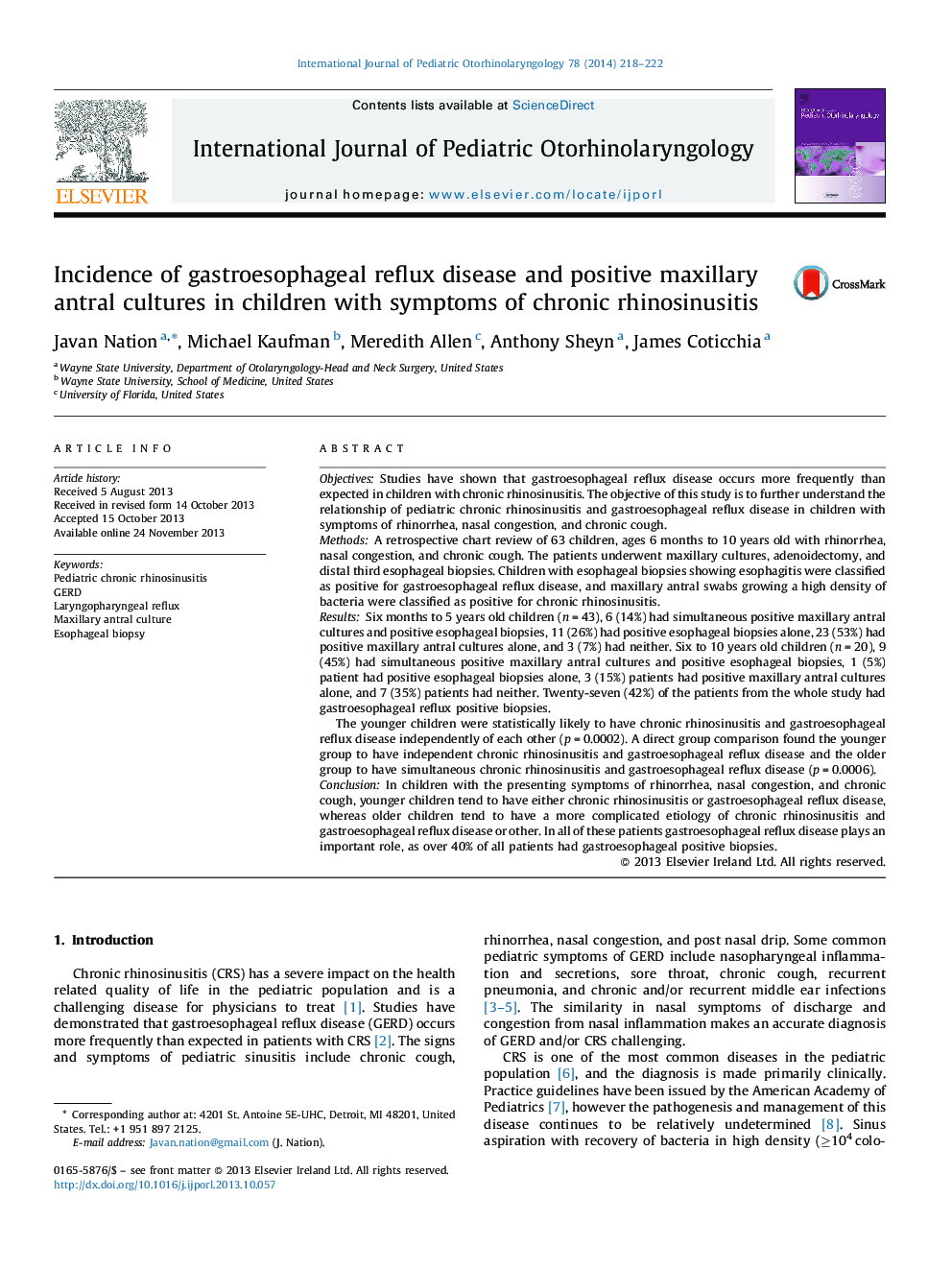| کد مقاله | کد نشریه | سال انتشار | مقاله انگلیسی | نسخه تمام متن |
|---|---|---|---|---|
| 6213805 | 1606011 | 2014 | 5 صفحه PDF | دانلود رایگان |
ObjectivesStudies have shown that gastroesophageal reflux disease occurs more frequently than expected in children with chronic rhinosinusitis. The objective of this study is to further understand the relationship of pediatric chronic rhinosinusitis and gastroesophageal reflux disease in children with symptoms of rhinorrhea, nasal congestion, and chronic cough.MethodsA retrospective chart review of 63 children, ages 6 months to 10 years old with rhinorrhea, nasal congestion, and chronic cough. The patients underwent maxillary cultures, adenoidectomy, and distal third esophageal biopsies. Children with esophageal biopsies showing esophagitis were classified as positive for gastroesophageal reflux disease, and maxillary antral swabs growing a high density of bacteria were classified as positive for chronic rhinosinusitis.ResultsSix months to 5 years old children (n = 43), 6 (14%) had simultaneous positive maxillary antral cultures and positive esophageal biopsies, 11 (26%) had positive esophageal biopsies alone, 23 (53%) had positive maxillary antral cultures alone, and 3 (7%) had neither. Six to 10 years old children (n = 20), 9 (45%) had simultaneous positive maxillary antral cultures and positive esophageal biopsies, 1 (5%) patient had positive esophageal biopsies alone, 3 (15%) patients had positive maxillary antral cultures alone, and 7 (35%) patients had neither. Twenty-seven (42%) of the patients from the whole study had gastroesophageal reflux positive biopsies.The younger children were statistically likely to have chronic rhinosinusitis and gastroesophageal reflux disease independently of each other (p = 0.0002). A direct group comparison found the younger group to have independent chronic rhinosinusitis and gastroesophageal reflux disease and the older group to have simultaneous chronic rhinosinusitis and gastroesophageal reflux disease (p = 0.0006).ConclusionIn children with the presenting symptoms of rhinorrhea, nasal congestion, and chronic cough, younger children tend to have either chronic rhinosinusitis or gastroesophageal reflux disease, whereas older children tend to have a more complicated etiology of chronic rhinosinusitis and gastroesophageal reflux disease or other. In all of these patients gastroesophageal reflux disease plays an important role, as over 40% of all patients had gastroesophageal positive biopsies.
Journal: International Journal of Pediatric Otorhinolaryngology - Volume 78, Issue 2, February 2014, Pages 218-222
